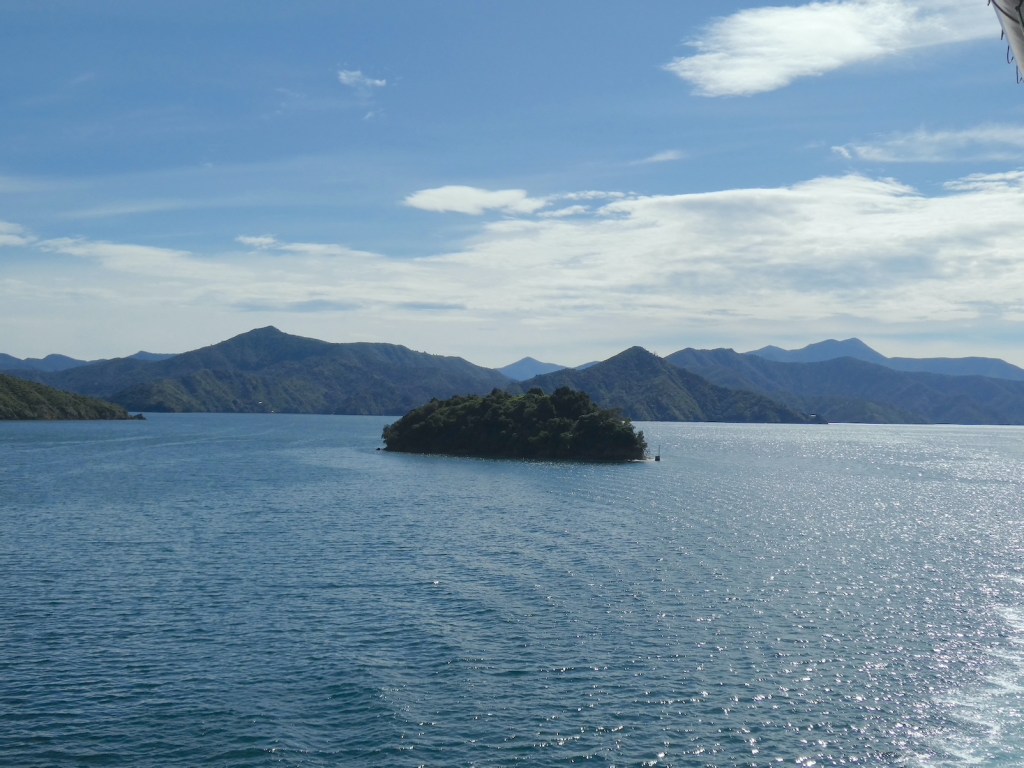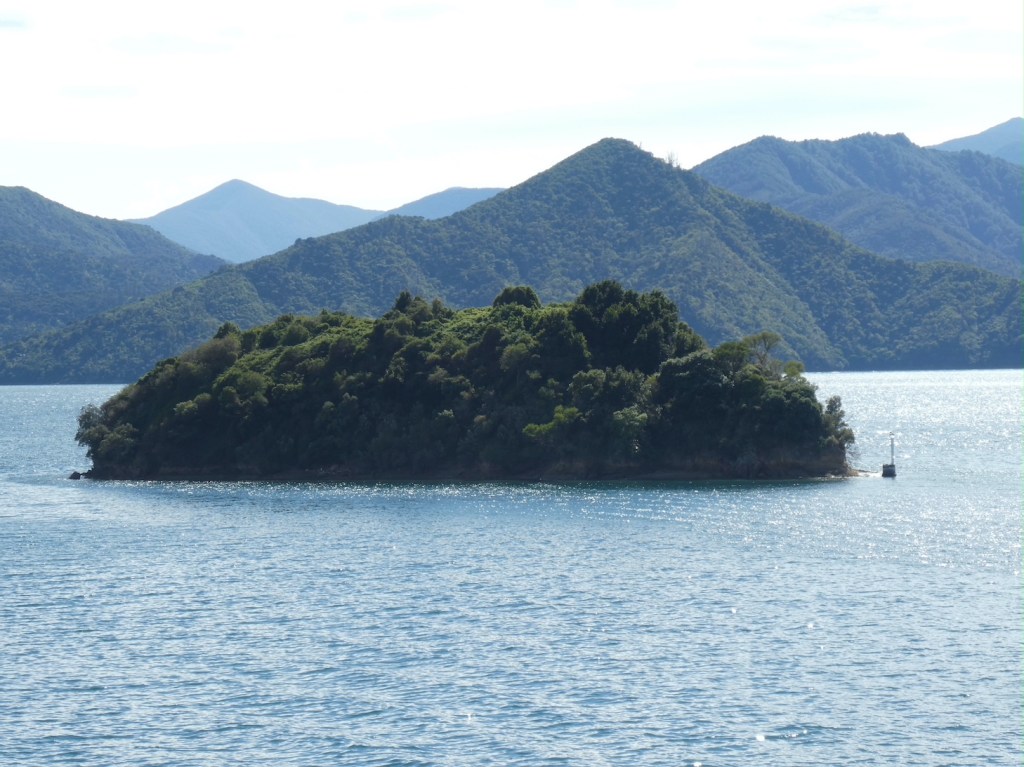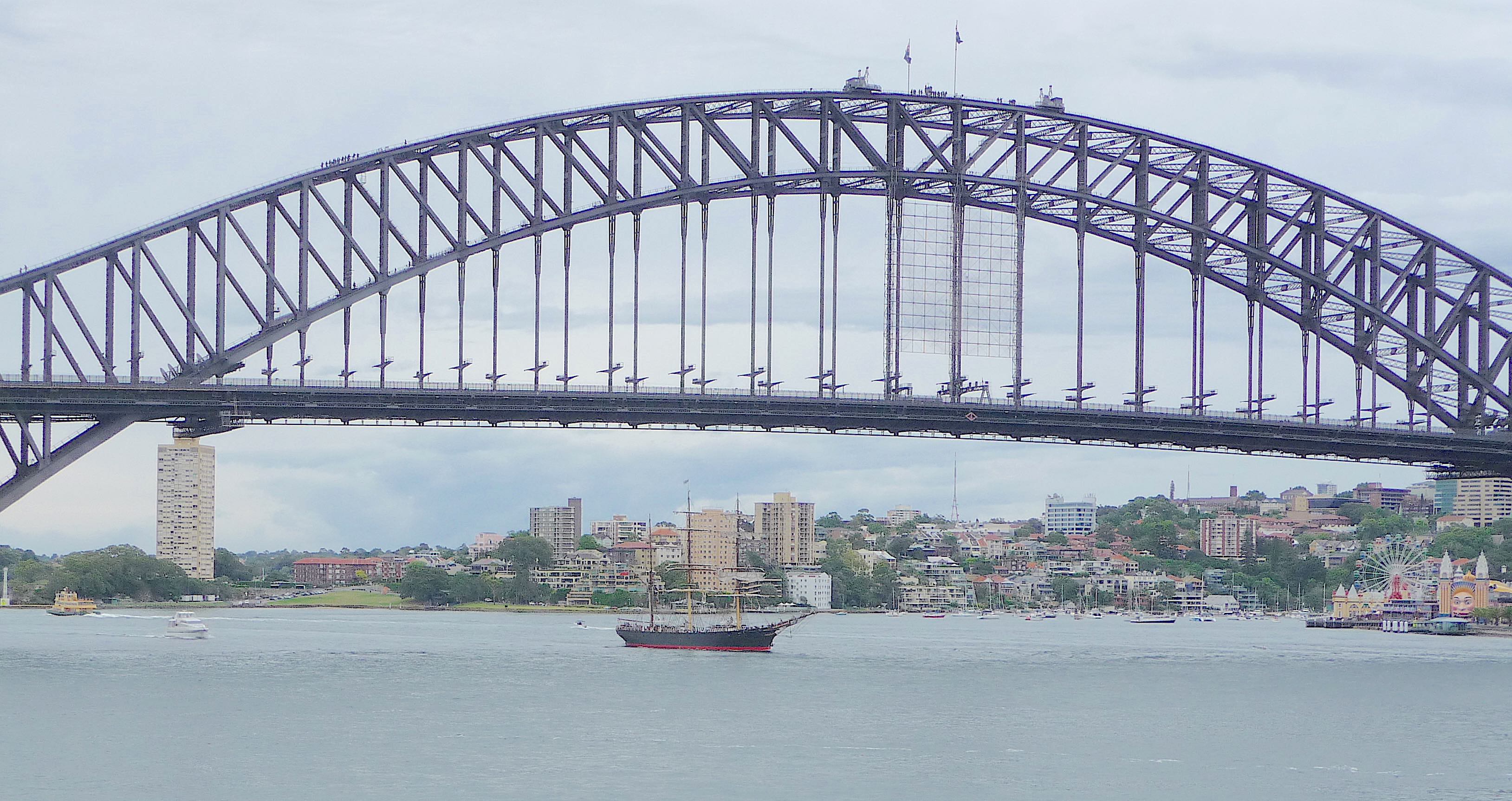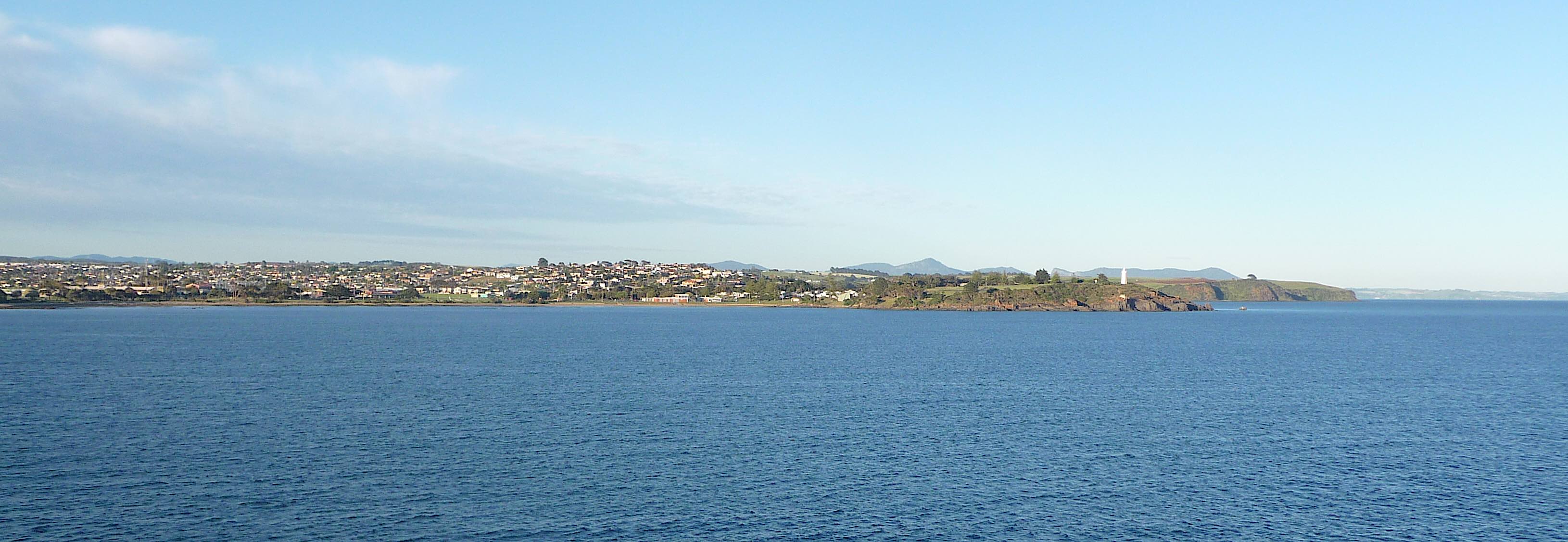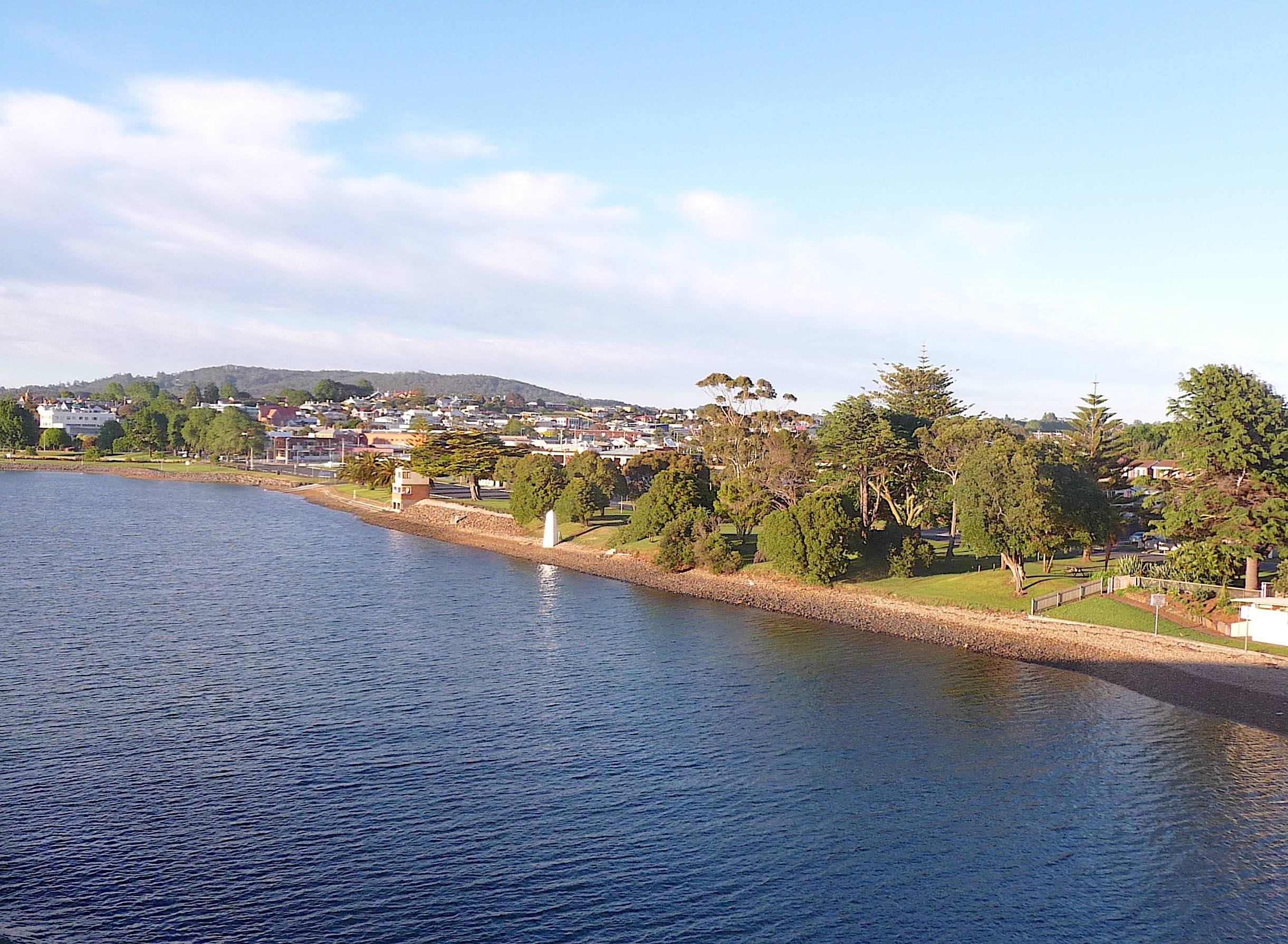Hobart is Australia’s second oldest capital city, after Sydney. It is an intriguing mix of old and new and the waterfront precinct is captivating. The Georgian sandstone warehouses lining the dock were built in the 1830s. The IXL Jam Factory is now the Henry Jones Art Hotel and others have been converted into businesses, galleries and restaurants.
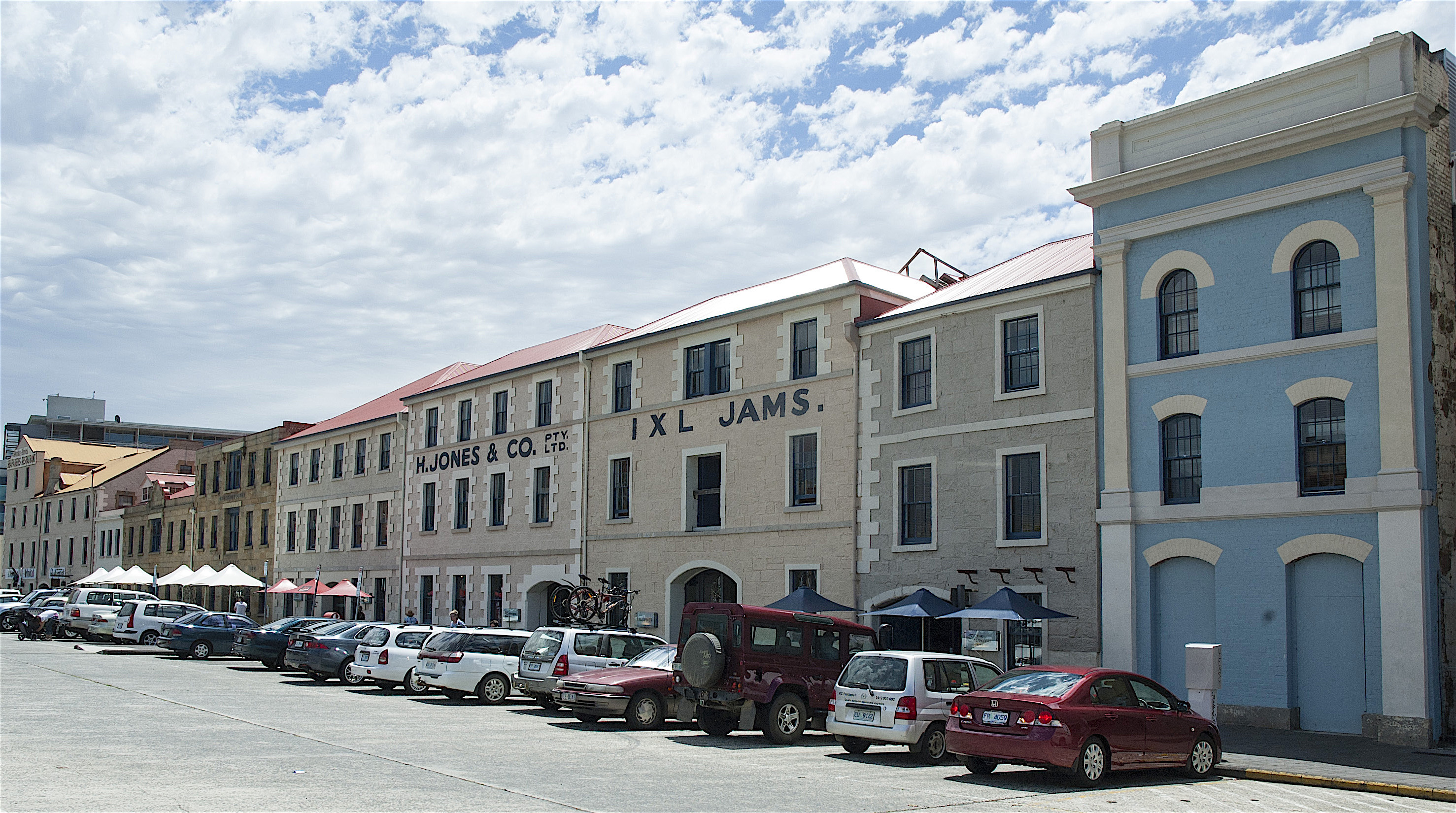
There are many fabulous restaurants to choose from, with seafood the specialty. The Drunken Admiral is very popular,

unfortunately we missed out without a reservation.
Looking across Victoria Dock,

Mures Lower Deck offers casual dining while the Upper Deck is a unique experience with fresh seafood caught, prepared and served by this local family owned business.

Strolling along Franklin Wharf, we encountered a series of bronze sculptures, a tribute to the Antarctic Expedition of 1899. Louis Bernacchi was raised in Tasmania and is immortalised in this, “Self Portrait, Louis and Joe”.
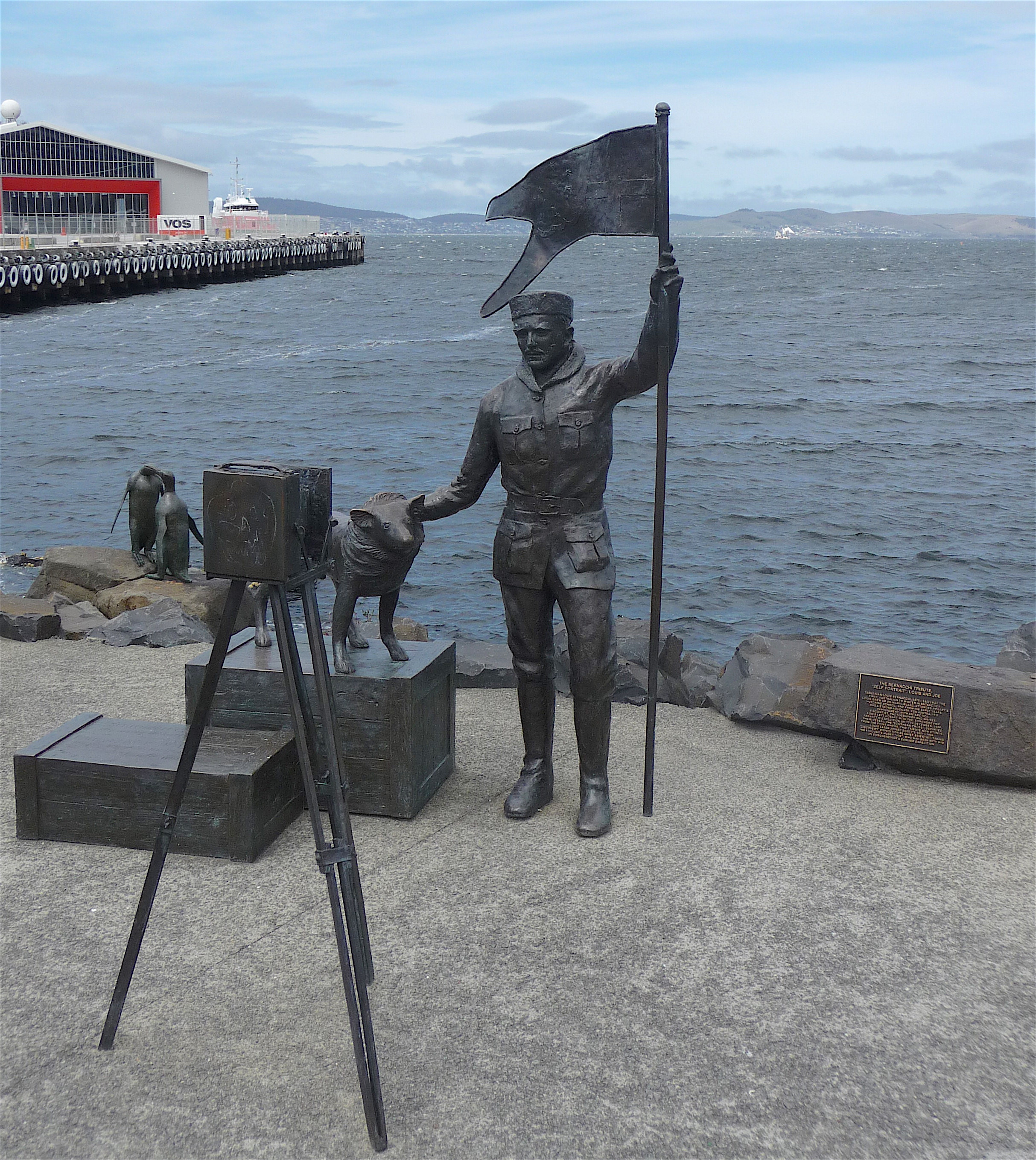
Nearby are other sculptures depicting the penguins and seals of Antarctica
as well as some of the supplies and other animals present on the expedition.
Sullivans Cove, on the Derwent River, was the original landing point in 1804 of Hobart’s founder, Lieutenant Governor David Collins and the site of initial European settlement in the area.

Further along the wharf is Constitution Dock, the finishing line for the Sydney to Hobart yacht race. We were very excited to be there for the celebrations.

Wild Oats XI had claimed its third consecutive line honours. Even for someone who doesn’t know a thing about yachts, I think she is a magnificent vessel.

The dock was bustling
but this gull had seen it all before.

This heritage travelling steam crane, built in 1899, sits proudly on the wharf since retirement in 1969.

Elizabeth Street Pier underwent a transformation in 1997

and now comprises an apartment style hotel, conference centre and eateries.
Moored at the pier is a full size replica of the Lady Nelson, one of the vessels arriving in 1804 with the first free settlers. She now spends her days sailing the River Derwent with passengers who wish to enjoy a tall ship sailing experience.

A short walk across the lawns of Parliament Square is Salamanca Place. Each Saturday there is a very busy market

offering a great variety of wares, mostly from local artisans.

Even the world famous can be seen busking in Salamanca.

Behind the market stalls are rows of sandstone buildings built in the 1830s to house grain, wool, whale oil and imported goods. They have since been converted into restaurants, galleries, craft shops and offices.

There are many laneways and squares to discover around Salamanca
and the new is starting to encroach on the old.

When a break is needed from the shopping and exploring, Irish Murphy’s is the perfect spot

for a light refreshment

to give you the strength to carry on.






